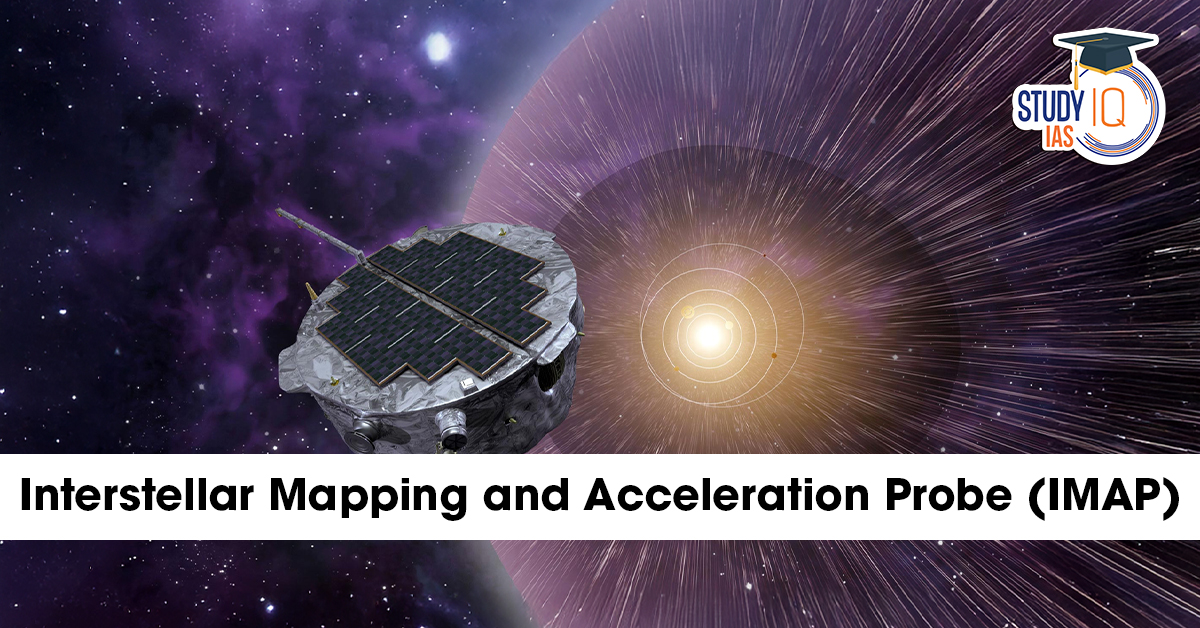Table of Contents
NASA recently launched the Interstellar Mapping and Acceleration Probe (IMAP), a cutting-edge spacecraft designed to explore the heliosphere and study the energetic particles that influence space weather. This mission promises to enhance our understanding of the solar system’s boundary and protect technological systems on Earth.
What is IMAP?
The Interstellar Mapping and Acceleration Probe (IMAP) is a space mission aimed at mapping the heliosphere’s outer boundary, tracing energetic particles, and improving space weather forecasting. The mission is vital for understanding how the solar wind interacts with the interstellar medium, which directly impacts satellites, astronauts, and communication systems on Earth.
IMAP will provide the most detailed maps of the heliosphere, offering unprecedented insights into the dynamics of solar wind, cosmic rays, and interstellar particles.
Key Features of IMAP
IMAP is equipped with 10 scientific instruments designed to capture data on various aspects of the heliosphere:
-
Neutral-atom detectors – IMAP-Lo, IMAP-Hi, IMAP-Ultra, to trace neutral particles entering the heliosphere.
-
Charged particle detectors – Measuring energetic ions and electrons from the Sun and beyond.
-
Magnetic field sensors – Observing variations in magnetic fields at the heliosphere boundary.
-
Dust detectors – Monitoring interstellar dust particles entering the solar system.
The spacecraft will operate from the Sun-Earth Lagrange Point 1 (L1), located approximately 1.6 million km from Earth, providing a stable location for continuous observation. IMAP will send near real-time data to Earth, allowing for improved space weather monitoring and forecasting.
IMAP-Lo: Studying Interstellar Hydrogen and Deuterium
One of the standout instruments on IMAP is IMAP-Lo, which specializes in detecting interstellar neutral hydrogen and deuterium. These measurements will help scientists study conditions at the heliopause, the outermost boundary of the heliosphere, where the solar wind meets interstellar space. This information is crucial for understanding the interaction between the Sun and the galaxy.
What is the Heliosphere?
The heliosphere is a vast bubble of solar wind and magnetic fields that extends well beyond the planets in our solar system. It acts as a protective shield, deflecting cosmic rays and harmful interstellar particles and providing a safer environment for life on Earth.
By mapping the heliosphere in detail, IMAP will provide insights into:
-
How solar wind shapes the solar system’s protective bubble.
-
The dynamics of cosmic rays entering the solar system.
-
Implications for satellite operations, astronaut safety, and communication systems.
Significance of IMAP
IMAP’s mission will advance our understanding of the solar system’s boundary and its interaction with the galaxy. It will enable:
-
Better prediction of space weather events that can affect Earth.
-
Enhanced protection for satellites and astronauts from energetic particles.
-
Scientific insights into the interstellar medium and cosmic radiation.
Conclusion
NASA’s IMAP mission represents a major leap in heliophysics and space exploration. By providing the most comprehensive maps of the heliosphere and monitoring energetic particles in near real-time, IMAP will not only advance scientific knowledge but also improve the safety and reliability of space-based technology critical to modern life.


 UNEP Champions of the Earth Award: UN's ...
UNEP Champions of the Earth Award: UN's ...
 Shilp Didi Programme: Empowering Women A...
Shilp Didi Programme: Empowering Women A...
 Is the Falling Rupee a Cause for Alarm?
Is the Falling Rupee a Cause for Alarm?

























